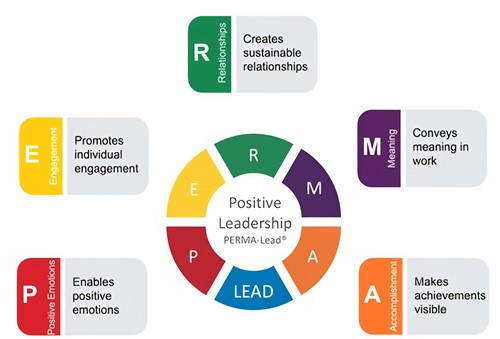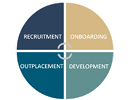How Positive Leadership is a Triple Win for Companies
The consequences of poor leadership in a workplace are numerous and costly.
It can hurt both the top and bottom lines as low job satisfaction among employees can lead to high turnover rates and a lack of productivity. This ultimately results in inferior customer retention and diminished profits.
So how can you turn poor leadership around in a company and more importantly, where do you start?
The answer may lie in Positive Leadership and the PERMA-model, an approach that is being taught by Norbert Heining. Norbert is a psychologist, author, and Business Manager at the SAM HR Competence Center in Germany.
Before joining SAM International, Norbert worked with leadership and HR in several international companies including 10 years as Head of HR at Coca-Cola Germany.
Norbert Heining’s enthusiasm is unparalleled when he speaks on the topic of Positive Leadership and the benefits companies can achieve using the method:
“What’s great about Positive Leadership is that is based on science and results are measurable. It provides a framework to help leaders and employees alike, thus serving the company. It really is a win-win-win and that’s why I love it.”
According to Norbert, any size company in any industry can implement Positive Leadership. However, it requires the right mindset from the leader or the management group. As a leader, you must have the mindset that employees matter and a genuine wish to focus on your employees’ strengths and not just their weaknesses or shortcomings.
Positive Leadership focuses on strengths
Positive Leadership is based on positive psychology which was pioneered by American professor and psychologist Martin Seligman. An important part of Positive Leadership is focusing on strengths rather than weaknesses. Therefore it’s important to differentiate between strengths and skills, reinforcing what already works and looking for where strengths can be bolstered even further.
Many leaders and companies get caught up in what could be better and focus mainly on their weaknesses. This can lead to a down-spiraling culture where nothing is good enough and where celebrations and acknowledgments are few and far between.
Norbert Heining explains it this way:
“It is key to differentiate between strengths and skills. An employee may be very structured and great at driving a process forward (strength). That does not mean he or she is an expert in using a program such as Microsoft Excel (skill).
Strengths come more naturally to a person while skills can be acquired by practically anyone. As a leader, you must figure out how to best utilize these to the company’s advantage.”
Norbert also recalls a real-life example from a client he worked with years ago:
The client worked within industrial machinery. The leader of this operation had a project manager who worked on servicing these machines. The project manager was brilliant in having the different sections and specialists work together but he was always lacking when it came to administrative tasks such as documentation and protocols. This frustrated the leader and for years he could not get the project manager to properly deliver on the administrative tasks.
“By using Positive Leadership, the leader shifted perspective. Instead of focusing on the project managers’ weakness, he hired an assistant to complete the administrative tasks. In a team, weaknesses can be compensated by the complementary strengths of others.
The project manager and the assistant in tandem could now complement each other and this meant the project manager could take on several more projects, thus advancing the bottom line of the entire company”, Norbert remarks with a smile.
The PERMA model and low-hanging fruits
Several studies document the effects of succeeding with Positive Leadership and the PERMA model. The payoffs range from fewer employee sick days and stress levels to increased average customer spending or lower turnover rates in PERMA-leadership styled environments.
But what exactly does PERMA mean? PERMA was developed by Professor Martin Seligman and later adapted to leadership by Dr. Markus Ebner. PERMA is an acronym that stands for:
- Positive Emotions
- Engagement
- Relationships
- Meaning
- Accomplishments
These five areas can help the leader structure how he or she engages with the team and better create an environment where intrinsic motivation thrives. However, it is not a one-size-fits-all approach. Norbert Heining elaborates:
“PERMA-leadership must take the individual into account. To really emphasize a team member’s strengths, the leader must accept not two team members are the same. But the PERMA-model can help structure how you go about your leadership on both an individual and team-based level.”
During the years working with PERMA, Norbert and his co-workers at the SAM HR Competence Center have gathered a how-to list of specific actions that can implement Positive Leadership in day-to-day operations. We will highlight a few of them here:
For example, if you wish to build more Engagement in your team, you can note five district strengths of each of your team members. Use them as a basis for an acknowledging individual conversation or do a team building exercise where employees share how they see each other’s strengths.
If you want to implement a greater sense of Accomplishments, you can start the weekly team meeting by using 10 minutes to reflect on everything that went well last week.
For more Positive Emotions in team meetings, you can also be aware of which emotion you as a leader bring to each meeting. Are you irritated from approaching deadlines or are you bringing a smile and open for sincere contributions in the meeting?
“Shifting your entire company towards Positive Leadership, can be a big task depending on your current company culture”, says Norbert. “Nevertheless, any leader with the right attitude can start planting seeds of positivity in their own team and then soon reap the benefits for the good of the whole company.”

Implementing Positive Leadership
Norbert Heining and his co-consultants usually help businesses that want to implement Positive Leadership in one of two ways:
First is a 2-day in-house workshop where entrepreneurs or managers can become acquainted with the Positive Leadership Model and test their own level of PERMA.
The second is a One-Year Development Program where SAM consultants provide 360-degree feedback and combine regular workshops and implementation tasks to ensure the company’s leadership is transformed by the time the program is completed.
As a closing statement, Norbert Heining was quick to reiterate why he loves developing leaders and management groups using Positive Leadership:
“Positive Leadership is based on science and the results are measurable in several ways. It can truly affect how much the leaders and employees love their job and that lifts the bottom line”. He continues and adds:
“Right now, companies are trying to figure out how they can recruit and retain a new generation of employees. For them, being positively reinforced in their profession is not a nice-to-have – it’s essential.
Companies that implement Positive Leadership simply have a greater chance of competing in the future, and that’s exciting!”
For more about Positive Leadership and how it can become a viable part of your leadership and company, feel free to contact our experienced SAM consultants here.
Contact:
Phone:
+ 45 7022 0205
Email:
info@sam-int.com
or submit via the contact formula HERE and a consultant will contact you.
SAM International - specialized in:

Kontaktformular
